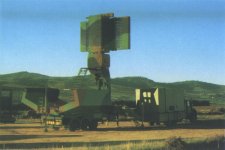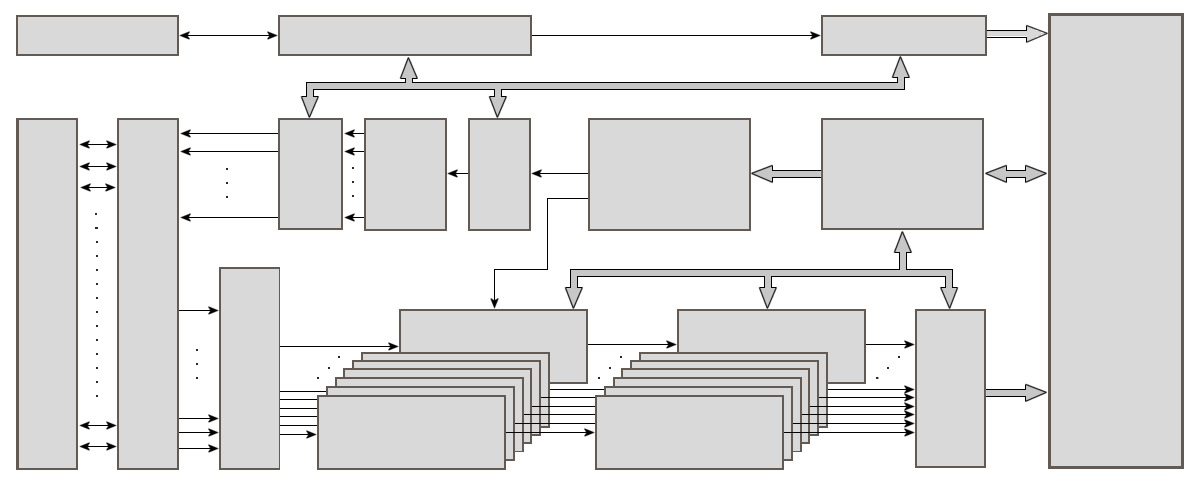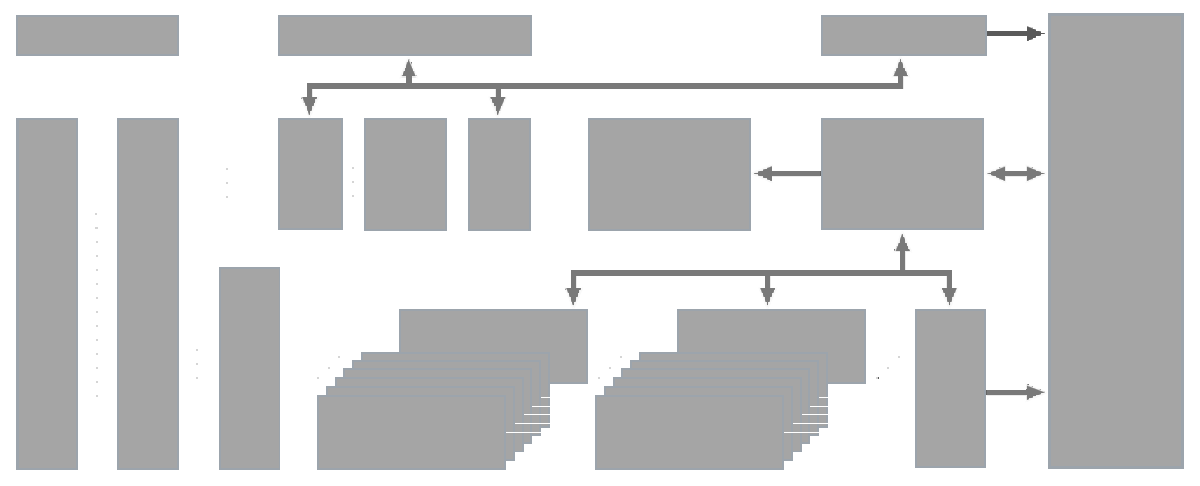DR-174
Description of the radar set, tactical-technical characteristics

Bild 1: © EADS
| Specifications | |
|---|---|
| frequency: | L-Band |
| pulse repetition time (PRT): | |
| pulse repetition frequency (PRF): | |
| pulsewidth (τ): | 110 µs |
| receive time: | |
| dead time: | |
| peak power: | 24 kW |
| average power: | |
| instrumented range: | 80 NM |
| range resolution: | |
| accuracy: | |
| beamwidth: | 2,8° |
| hits per scan: | 3 |
| antenna rotation: | |
| MTBCF: | |
| MTTR: | |
3D Radar System DR 174
The 3D radar system DR 174 is a highly mobile short/mid range surveillance radar operating in the L-Band. The radar system can be used as coastalradar for sea and air surveillance or as “gap fillers” for areas longer radars do not cover. The system can be integrated into existing defence networks, anti-aircraft (AA) weapon systems and other networks. It can also serve as a “stand alone” control center due the fully integrated state of the art working positions. A wide range of ECCM features and excellent clutter suppression ensure the detection of small targets even in a very hostile enviroment.
This 3D radar system operates in L-Band using a stacked beam active planar antenna. It features up to 8 elevation beams on receive. The system is designed in fully solid-state technology.
The DR 174 Doppler radar features
- High unambiguous radial velocity due to appropriate pulse repetition frequency (PRF) stagger
- Frequency diversity
- High doppler resolution
- Detecting of tangential flying targets due to self learning ground clutter map
The detection range against tactical aircrafts (“Swerling 1”- targets) with a radar cross-section (RCS) of 1 m² is 135 km at a probability of detection of 90%. The detection range against tactical ballistic missiles with a radar cross-section (RCS) of 0.1 m² is 75 km at the same conditions.
Waveform selection
The following statements highlight the capabilities of the DR 174 waveform selection:
- Different waveforms for various radar modes
- Non-linear frequency modulation
- Burst-to-Burst frequency change
- Burst-to-Burst pulse repetition freequency change
- Dual pulse for near range covering
- High range resolution waveforms
ECCM features
The electronic counter counter measures used by the DR 174 are:
- Frequency change from Burst-to-Burst
- Moving target detection processing with Doppler selective constant false alarm rate
- Low antenna sidelobes in azimuth and elevation
- Sidelobe blanking (SLB) (optional)
- Large receive dynamic range
- Selectable beam-processing
- Automatic jamming avoidance circuit (AJAC)
Clutter rejection
Excellent clutter suppression and detection of small targets in any type of clutter (ground- and rainclutter, seaclutter, chaff and angels) by:
- Very stable solid-state transmitter
- Frequency agile synthesizer
- Moving target detection Doppler processing in frequency domain (sub clutter visibility)
- Ordered statistic constant false alarm rate in time domain
- High resolution clutter map
- Decreasing the size of resolution cell of radar (pulse compression with time sidelobes <45 dB)
- Matched detection threshold for each Doppler channel
- Tilting the antenna to higher elevation angles
ARM protection
Protecting against Anti Radar Missiles is supported by:
- LPT due to low transmitter peak power
- Transmitter silent sectors
- Very low antenna sidelobes
- Inherent system protection due to radar operating frequency band ( L-Band)
The system consits of four major components the sensor (antenna group consisting of primary ans secondary radar), the Signal Processing (SiP) shelter, the Operations and Missions Control (OMC) shelter and the generator for reliable power supply in mobile deployment.
Also available is the DR 184, the long-range version (400 km) of DR 174.

network
Mission Control Center
forming
network
Waveform-
generator
Manager
Receiver
Signal processor
Figure 2: The concept of the DR 174 sensor

network
Mission Control Center
forming
network
Waveform-
generator
Manager
Receiver
Signal processor
Figure 2: The concept of the DR 174 sensor
